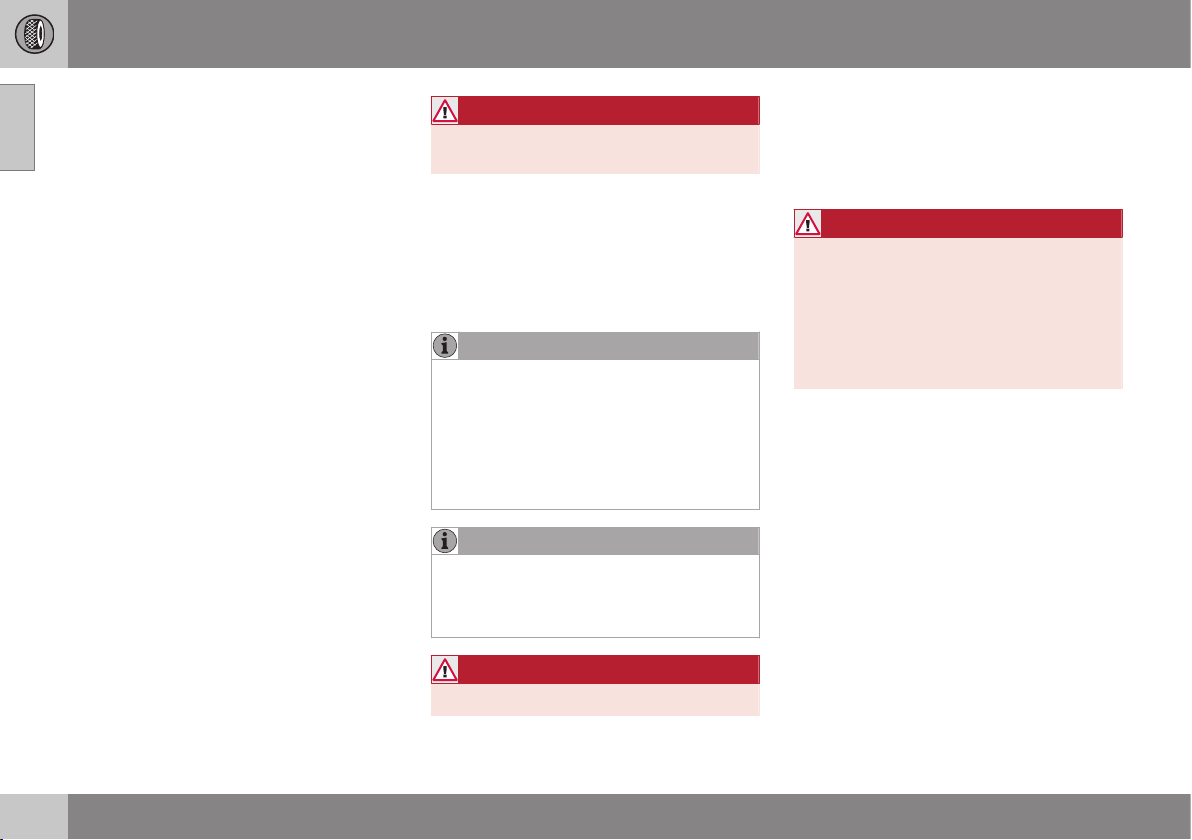Loading ...
Loading ...
Loading ...

09 Wheels and tyres
09
336
* Option/accessory, for more information, see Introduction.
Emergency puncture repair* -
rechecking
When a tyre has been sealed with the emer-
gency puncture repair kit, Temporary Mobility
Kit (TMK), a subsequent check must be made
after approx. 3 kilometres of driving.
Check tyre pressure
1. Connect the tyre sealing equipment
again.
2. Read the tyre pressure on the pressure
gauge.
•
If it is below 1.3 bar then the tyre is
insufficiently sealed. The journey
should not be continued. Contact a
tyre centre.
•
If the tyre pressure is higher than 1.3
bar, the tyre must be inflated to the
pressure specified in accordance with
the tyre pressure label on the driver
side door pillar (1 bar = 100 kPa).
Release air using the pressure reduc-
ing valve if the tyre pressure is too
high.
WARNING
Do not unscrew the bottle, it is equipped
with a reverse catch to prevent leakage.
3. Make sure the compressor is switched
off. Detach the air hose and cable. Refit
the dust cap.
4. Fold the hose into the box and leave the
bottle where it is. Place TMK in the cargo
area.
NOTE
•
After a tyre has been inflated, always
refit the dust cap in order to avoid
damage to the valve from gravel, dirt,
etc.
•
Only use plastic dust caps. Metal dust
caps can rust and become difficult to
unscrew.
NOTE
The sealing fluid bottle and the hose must
be replaced after use. Volvo recommends
that this replacement is performed by an
authorised Volvo workshop.
WARNING
Check the tyre pressure regularly.
Volvo recommends that the car is driven to
the nearest authorised Volvo workshop for
the replacement/repair of the damaged tyre.
Advise the workshop that the tyre contains
sealing fluid.
WARNING
You should not drive faster than 80 km/h
after the emergency tyre repair kit has
been used. Volvo recommends a visit to
an authorised Volvo workshop for inspec-
tion of the sealed tyre (maximum driving
distance is 200 km). The staff there can
determine whether or not the tyre can be
repaired or if it needs to be replaced.
Related information
•
Emergency puncture repair* - operation
(p. 334)
•
Emergency puncture repair* - returning
components to their places (p. 337)
Loading ...
Loading ...
Loading ...